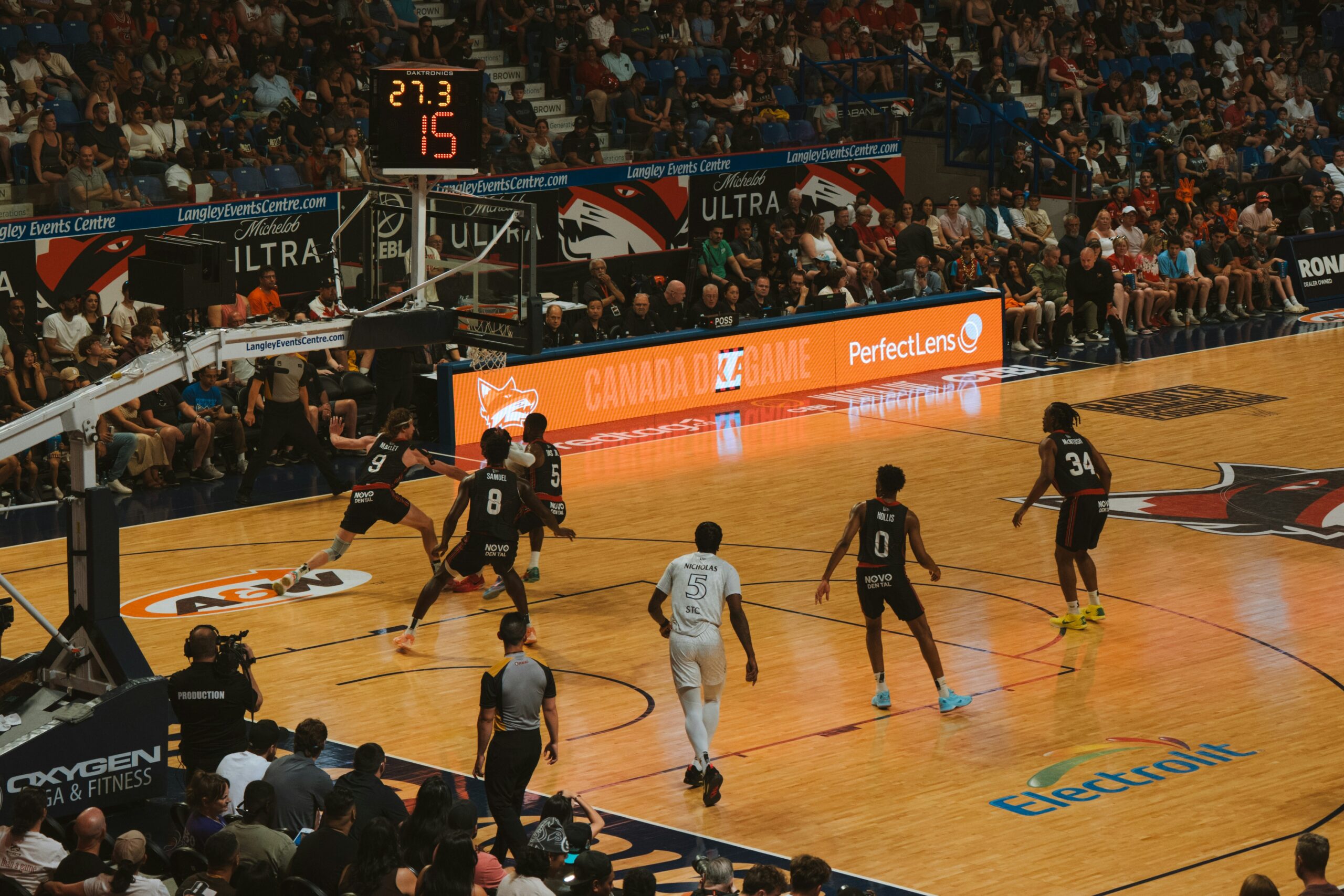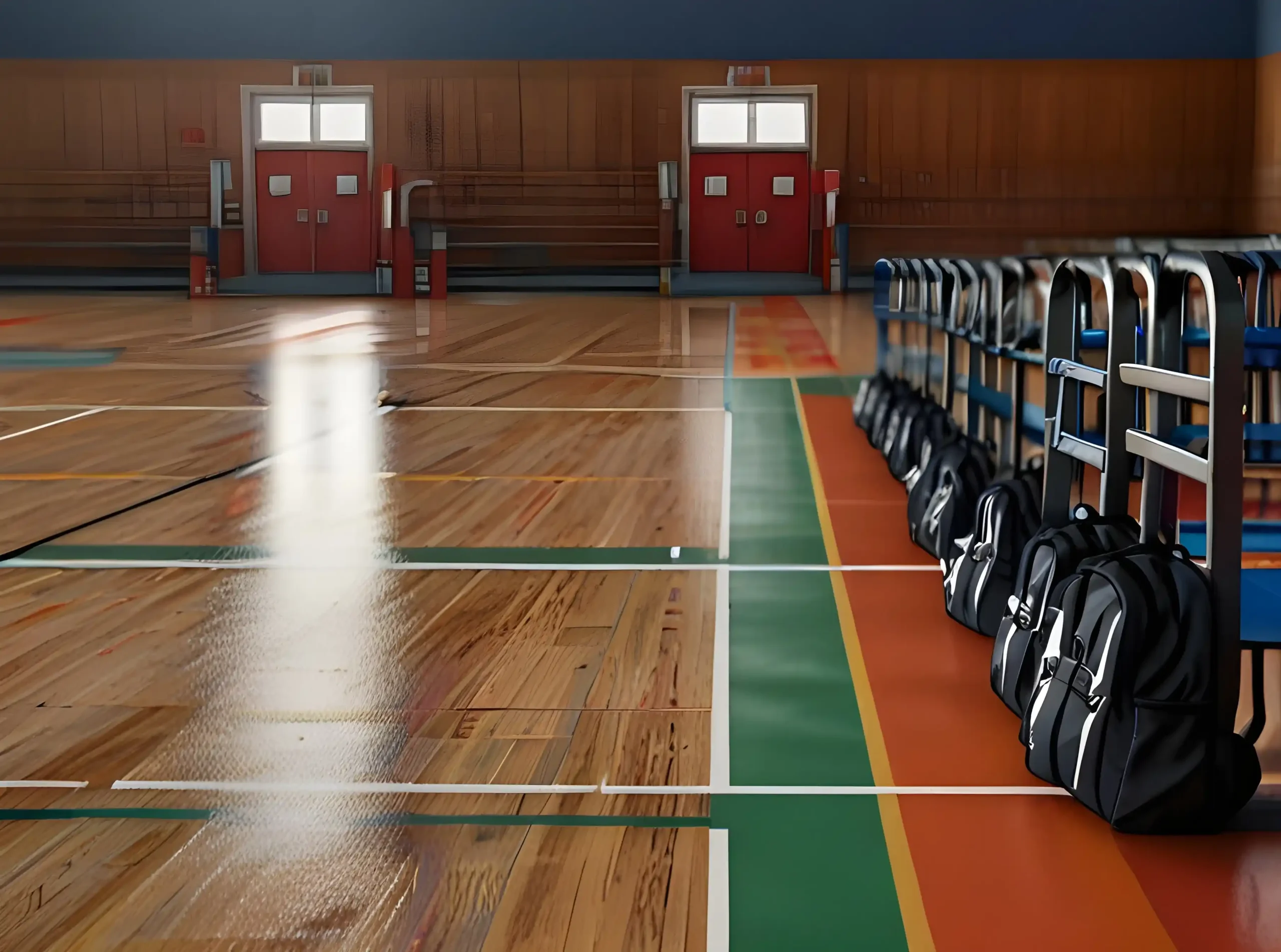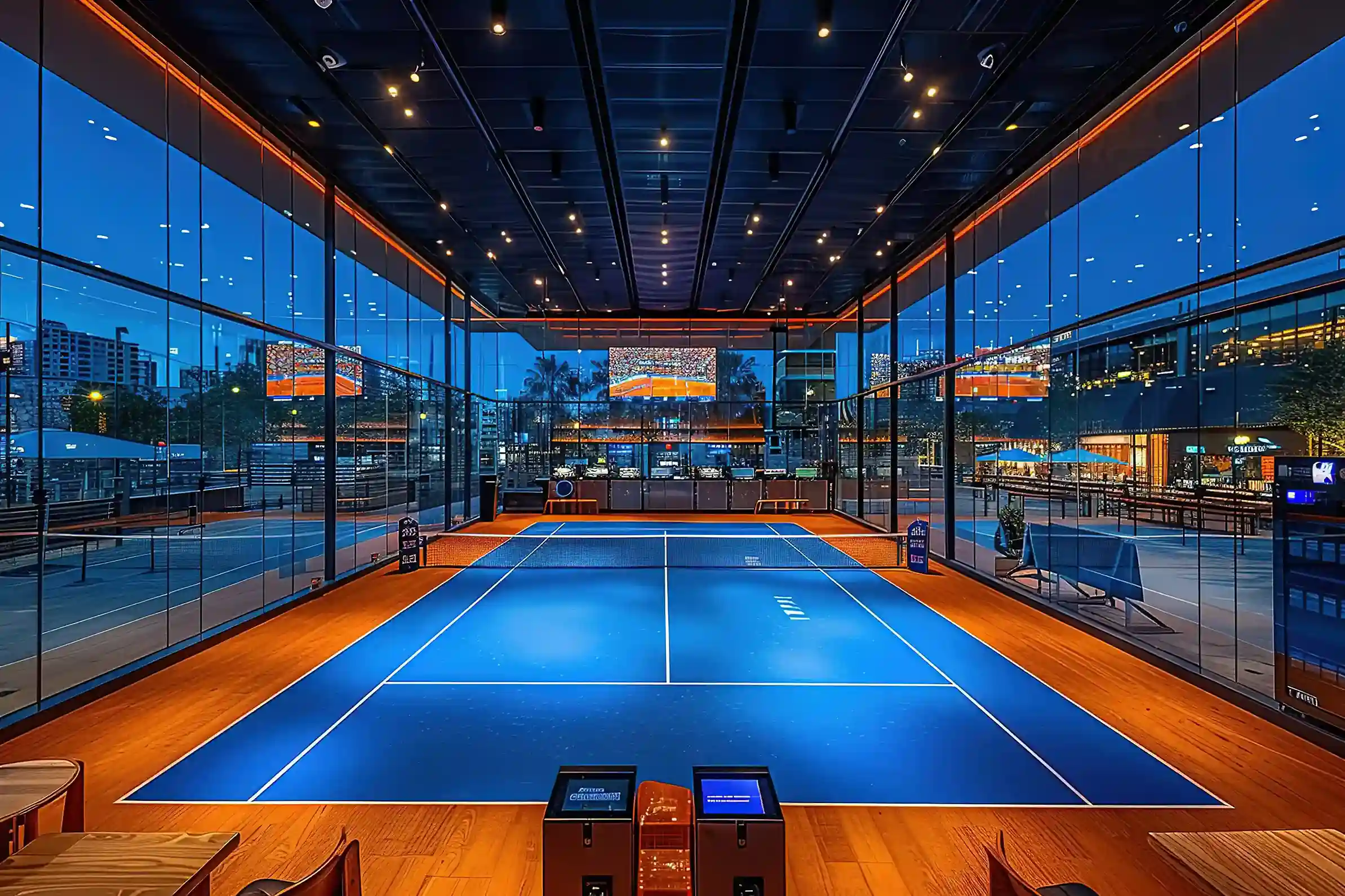Basketball is a global sport with millions of fans, but not all games are played under the same set of regulations. The two most prominent governing bodies, the National Basketball Association (NBA) and the International Basketball Federation (FIBA), have distinctly different rules and court dimensions. These differences shape the style of play, player strategy, and even game outcomes.
For facility managers and architects working on sports venues, understanding the nuances between NBA and FIBA courts is critical. Whether you’re planning a multi-purpose sports facility or upgrading an existing floor, knowing these key differences will ensure you adapt the space to meet specific requirements.
This guide unpacks the differences in court dimensions, their impact on gameplay, and how VMKON’s bio-based sport floors can help you design a surface that meets your needs.
NBA Court Dimensions Overview
An NBA court is designed with precision to facilitate high-intensity games:
- Length and Width: NBA courts measure 94 feet long by 50 feet wide (28.65m x 15.24m), allowing for fast-paced, up-and-down gameplay.
- Three-Point Line Distance:
- 23.75 feet (7.24m) from the basket at the arc’s peak.
- 22 feet (6.7m) from the corners.
- Key Dimensions:
- The free-throw lane, commonly referred to as the key, is 16 feet wide (4.88m) and 15 feet long (4.57m).
- It includes a rectangular shape that offers wide post-play space.
- Restricted Area Arc:
- At 4 feet (1.22m) from the basket, this arc determines charge/block calls, creating strategies for both offense and defense near the rim.
These specifications create a court that favors speed, perimeter shooting, and strong post play.
FIBA Court Dimensions Overview
FIBA, the body responsible for international basketball, uses smaller courts that encourage teamwork and structured gameplay:
- Length and Width: FIBA courts are 91.86 feet long by 49.21 feet wide (28m x 15m), slightly smaller than NBA courts.
- Three-Point Line Distance:
- 22.15 feet (6.75m) at the arc’s peak.
- 21.65 feet (6.6m) from the corners.
- Key Dimensions:
- Unlike the NBA’s rectangular key, FIBA uses a trapezoidal shape in older rules, but it has now transitioned to a 16.08-foot-wide rectangular key for uniformity.
- Restricted Area Arc:
- Traditionally absent, although newly adopted FIBA rules now include a 1.25m arc for blocking fouls, slightly different from the NBA version.
These court dimensions prioritize a team-oriented style of play, where passing and strategy take center stage.


Key Differences Between NBA and FIBA Court Dimensions
While the differences may seem minor at first glance, they significantly impact how the game is played and the experience for players and fans alike.
1. Court Length and Width
- NBA courts are slightly larger, measuring 94 feet by 50 feet.
- FIBA courts are smaller at 91.86 feet by 49.21 feet.
- Impact on Gameplay:
- The shorter FIBA court lends itself to more structured sets and reduced reliance on fast-break play. Meanwhile, the NBA’s larger court allows for more open spaces and quick-paced movement.
2. Three-Point Line Distance
- The NBA three-point arc reaches 23.75 feet at its peak, while FIBA’s arc is 22.15 feet.
- Impact on Gameplay:
- The shorter FIBA three-point line encourages more attempts, enhancing the value of outside shooting. NBA’s larger arc shifts the spacing focus, benefiting sharpshooters who excel from long range.
3. Key Dimensions
- NBA courts feature a 16-foot-wide rectangular key. FIBA courts have adopted a similar design, but older systems used a trapezoid, altering strategies for post-ups and mid-range shooting.
- Impact on Gameplay:
- The width of the NBA key allows big men to operate and dominate inside. These dimensions influence rebounding, shot-blocking, and foul-drawing positions.
4. Restricted Area Arc
- The NBA’s restricted area arc is at 4 feet from the basket, while FIBA’s newly adopted arc is slightly closer at 1.25m.
- Impact on Gameplay:
- The NBA arc focuses on protecting offensive players driving to the basket, leading to fewer charge fouls. FIBA’s lack of clear historical arc rules has led to varying defensive approaches under the rim.
Impact of These Differences on Gameplay and Strategy
Understanding these dimensional differences is crucial, as they directly shape how teams approach the game. Here are some key impacts:
- Pace of Play:
- NBA’s larger courts favor fast-paced games with more scoring opportunities in transition.
- FIBA’s smaller courts slow the pace, emphasizing half-court sets.
- Spacing and Shooting Strategies:
- The longer NBA three-point line results in a focus on floor spacing and rewarding long-range specialists.
- FIBA’s closer arc makes the three-point shot more accessible, encouraging role players to contribute.
- Post Play and Foul Drawing:
- NBA’s wider key allows dominant post players to shine, influencing offensive plays around centers and forwards.
- FIBA’s narrower spaces make post play more physical and condensed.
- Defensive Schemes:
- NBA defenders rely on the restricted area arc to influence drives and positioning.
- Without a consistent arc across its history, FIBA defenders must adapt more dynamically.
- Player Adaptation:
- Players moving between NBA and FIBA settings often modify their skill sets and timing. For example, shooters retrain their range, and big men adjust their paint play.
Designing Courts for Both NBA and FIBA Standards
If you’re managing a facility that hosts games under both NBA and FIBA rules, choosing the right sport flooring is essential for flexibility and performance. This is where VMKON’s bio-based sport floors come into play.
VMKON provides premium, durable, and multi-purpose sport flooring that meets both NBA and FIBA standards. With our bio-based sport floor systems, you can ensure optimal performance for professional athletes while maintaining eco-friendly practices.
Key benefits of VMKON sport floors:
- Multi-Dimensional:
- Accommodates both NBA and FIBA court dimensions within the same facility.
- Durable and Sustainable:
- Made from bio-based materials designed for high-performance games.
- Easy Customization:
- Customizable line markings allow seamless transitions between different rulesets.
Take the Next Step in Court Design
Whether you’re working on designing a new facility or upgrading an existing one, understanding the key differences between NBA and FIBA court dimensions is vital for proper planning.
Contact VMKON today to learn more about our sustainable sport floor options and how we can help you design a space that’s perfect for basketball, no matter the governing body. With VMKON, you can build a court that meets the highest standards of excellence and durability.








